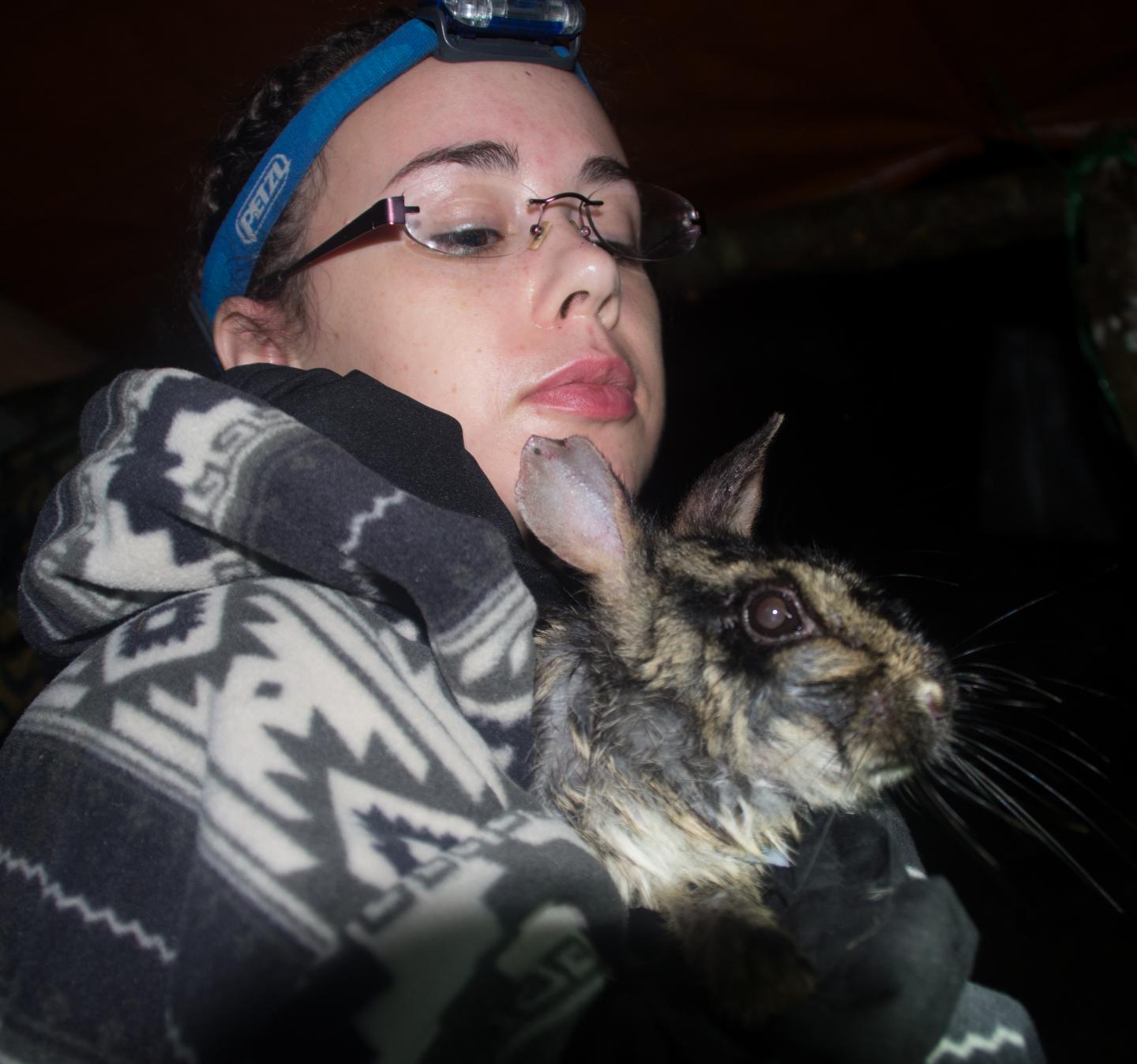Say Cheese: Rare Striped Rabbit Photographed

A rare striped rabbit, seen only a handful of times, has peeked out of its tropical forest home, and a graduate student got the chance of a lifetime, holding and photographing the little guy on the first day of a three-month expedition to study the animal's habitat.
The Annamite striped rabbit (Nesolagus timminsi) has been spotted only in the pristine tropical forests of the northern and central Annamite Mountain range between the borders of Vietnam and Laos. Rabbit expert Diana Bell and colleagues from the University of East Anglia in Norwich, United Kingdom, first described the species in 1999 in the journal Nature.
Researcher Sarah Woodfin, who is working under Bell for a master's in applied ecology and conservation, has always loved rabbits and hares, she said. She and Bell decided to focus her thesis work on the striped rabbits of Southeast Asia because there is so little known about them. "We do not even know its habitat preference,” she told Live Science in an email. [101 Animal Shots You'll Go Wild Over]
Woodfin said the rabbits have only rarely been photographed in groups, suggesting they live solitary adult lives. As to the rabbit she held, "We don't know if it had a family," because it was only in her arms for under 30 minutes, and "we released it in the same spot we found it," she said.
With a body length of about a foot (30 centimeters), the striped rabbit "is very handsome, with a golden-brown body, a red rump, black stripes, small ears and no tail," Woodfin said.
Although rabbits have the reputation for being prolific breeders, several species are actually at risk for extinction. The Amami rabbit from Japan, for instance, is under threat from invasive predators, and other rabbit species are threatened by warming climates, which can shift and alter their environments.
During the 1950s, a virus called myxomatosis decimated the rabbit population of the grasslands in southern England. Without rabbits to munch on the vegetation, shrubs took over the area and affected the habitat for butterfly and bird species, said Woodfin.
Get the world’s most fascinating discoveries delivered straight to your inbox.
Southeast Asia is at risk for a similar eventuality. Currently, the region is bursting with biodiversity, but deforestation and poaching could soon change that. Woodfin carried out her study, with support from the World Wildlife Fund, in a protected area in Vietnam. The WWF has an ongoing monitoring and conservation program for endangered species specific to Vietnam and Laos, she said.
More research is necessary to understand why the rabbits have been pushed into secluded forests in Southeast Asia. It is possible the rabbits once lived in other forest habitats, but that hunting drove them from those spots, Woodfin said, adding that "we need to know more about the rabbit before that could be properly assessed."
Elizabeth Goldbaum is on twitter. Follow Live Science @livescience, Facebook & Google+. Original article on Live Science



